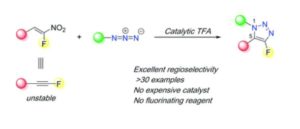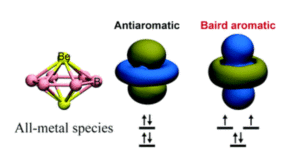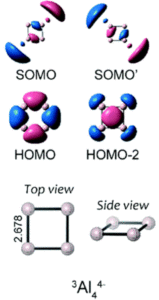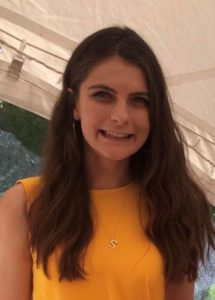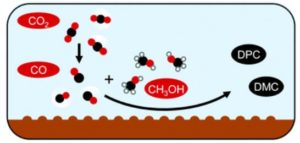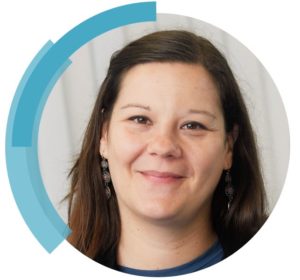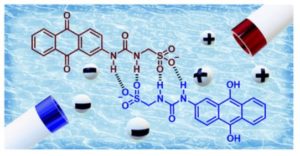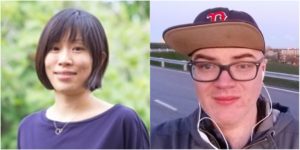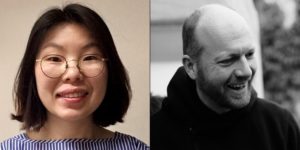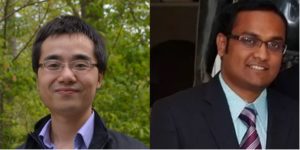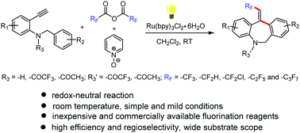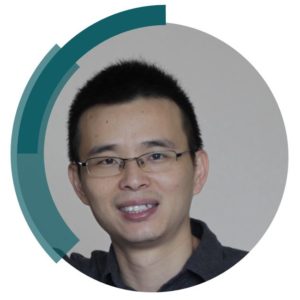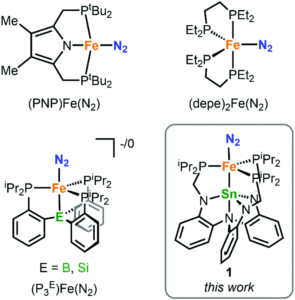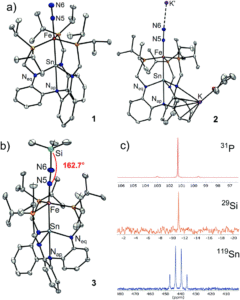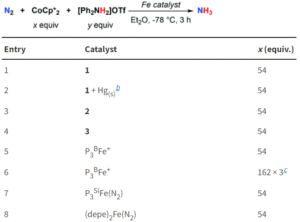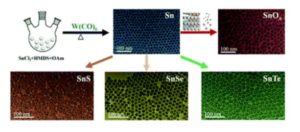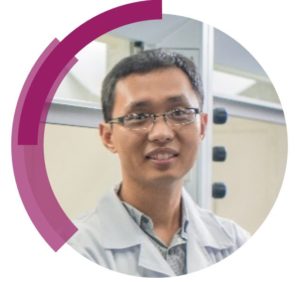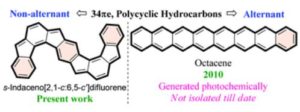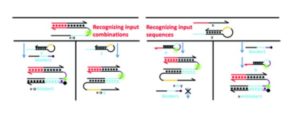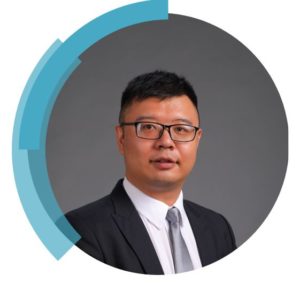Earlier in the year, Sudeshna Roy published her first independent research article in ChemComm. As part of our ongoing #ChemCommMilestones initiative, we wanted to speak to Sudeshna about her experiences becoming an independent researcher. Read Sudeshna’s #ChemComm1st article here: Regioselective synthesis of 4-fluoro-1,5-disubstituted-1,2,3-triazoles from synthetic surrogates of α-fluoroalkynes.
Here’s our interview with Sudeshna.
What are the main areas of research in your lab and how has your research progressed since publishing your first article?
The central theme of our lab revolves around small molecules. We contribute to developing new methods and strategies to access small molecules of biological and medicinal relevance and using them as tools to probe biological questions or in human diseases. Currently, we are pursuing seemingly two disparate programs that I envision merging into a drug-discovery platform. We have always been drawn to fluorination strategies and the impressive surge in fluorinated pharmaceuticals and agrochemicals. We identified that fluoroalkynes, which would be the simplest precursor as a gateway for new fluorinated motifs, are elusive and notorious for undergoing spontaneous cyclotrimerization reactions. A search for synthetic surrogates led us into the domain of fluorinated alkenes and their fascinating chemical reactivity portfolio, primarily due to the polarity inversion feature. On the other hand, we are deeply committed to addressing the ongoing global health crisis of antimicrobial resistance by developing new chemotherapeutic agents against new and existing bacterial targets to expand our armamentarium of antibacterials. We are currently pursuing a multi-disciplinary collaborative project to develop a new class of compounds with narrow-spectrum activity against Mycobacterium tuberculosis (Mtb), the causative agent for tuberculosis. Our ultimate merger will be using the hand-tailored fluorinated compound library, developed in our lab, for ligand-based screening using 19F NMR against antibacterial targets of interest to seek effective and new antibacterials.
Since our first publication in ChemComm, the ongoing efforts have generated an array of diverse heterocyclic compounds using fluorinated alkenes as a synthetic precursor. Concurrently, we have discovered a new class of compounds that we are very excited about. The parent compound of this family shows a narrow-spectrum anti-tuberculosis activity, and other analogues show broad-spectrum activity, including methicillin-resistant Staphylococcus aureus (MRSA) and Vancomycin-resistant Enterococci (VRE).
What do you hope your lab can achieve in the coming year?
Like everywhere else in the world, our research has been severely impacted by COVID-19. All the labs at the University of Mississippi School of Pharmacy were shut down, including ours, for almost two months. We became partially operational starting mid-May at a much-reduced capacity. Accepting the reality that this will remain for a while, in the coming year, we hope to publish more in the area of fluorinated heterocycles, expand our research directions in fragment-based screening to merge our efforts of antibacterial discovery and fluorine chemistry. We also hope to continue our multidisciplinary collaboration on the tuberculosis drug discovery front. We are excited about our recent discovery of a new class of compounds that specifically inhibit Mtb’s growth and survival. We observed broad-spectrum activity through different chemical modifications of the parent compound, including MRSA and VRE. We are investigating the mechanism of action (MoA) and the biomolecular target. The parent compound’s MoA is unknown, whereas interestingly, some analogs target a protein called, MraY, which is involved in bacterial cell wall synthesis. We are definitely looking forward to resuming travel next year and attend conferences.
Describe your journey to becoming an independent researcher.
I have always been interested in chemistry and pursued B.Sc in chemistry from St. Stephen’s College in India and an M.Sc. in organic chemistry from the University of Delhi in India. During my Ph.D., I worked on the total synthesis of tetrahydrofuran-containing natural products with an anti-cancer activity that sparked my interest in small molecules’ biological applications. Hence, I expanded my focus to a more applied field of medicinal chemistry and drug discovery during my postdoctoral tenure. At the University of Kansas, I was part of the NIH-funded Molecular Libraries Probe Production Centers Network (MLPCN) Specialized Chemistry Center, where I participated in several drug-discovery projects in therapeutic areas ranging from mitochondrial permeability transition pore (mtPTP), multiple sclerosis, Alzheimer’s disease, and cardiovascular disease, to name a few. At the UNC Eshelman School of Pharmacy, I gained experience in developing inhibitors of RNA-binding proteins Hu antigen R and Musashi-1 RNA-binding proteins that are overexpressed in breast and pancreatic cancers. Through these experiences, I realized one of my strengths is building a team and leading multidisciplinary collaborative projects. It gives me a tremendous opportunity and pleasure to learn something completely new that I have never done before and integrate those skill sets in drug discovery projects.
I had an interesting journey transitioning to the University of Mississippi as a tenure-track faculty, though. I had no clue I would end up being a PI. As I was nearing the end of my postdoc tenure, I was mainly focusing on applying for industrial jobs. Being an international student, I had limited options with my then visa situation. Even though I was open to different opportunities, I always thought academia was daunting. Constantly thinking about new ideas, securing grant funding, and running a lab leaves you with not much for anything else. Thankfully, I had a couple of great mentors who believed in me and encouraged me to pursue academia. So, I applied and got lucky! Now I know all the scientific pursuits could be rewarding, despite all the challenges. We can be smart and choose how much time to spend to enjoy other aspects of life. It’s a lot of fun working with students that are so driven and passionate. It motivates me to do better to help them in their journey!
What is the best piece of advice you have ever been given?
I have been fortunate to have great mentors in my journey so far and learned a great deal through my advisors, colleagues, and students! However, there are a few that need special recognition. I will attribute my scientific growth to my postdoc advisor Prof. Jeffrey Aubé and being part of the Aubé lab. Jeff has always given me honest opinions and useful advice on setting up a lab and what to expect as a new PI. A close friend of mine, Debajit Saha, who is now an Assistant Professor at Michigan State, always told me to pursue crazy ideas and not be afraid of failure or making mistakes. I have yet to follow my crazy ideas, but I have definitely learned a lot through failures and mistakes. One of the most useful life advice I got was from my therapist. She reminded me to enjoy all aspects of life, think positively no matter what, keep dreaming where and what you want to be in the future; it will get you closer. So, I am always dreaming. Fingers crossed!
Why did you choose to publish your first article in ChemComm?
For our work on the use of fluorinated alkenes as synthetic surrogates for fluoroalkynes to access fluorinated triazoles, we wanted to reach out to a broader audience encompassing all areas of chemistry, materials to chemical biology. We hope our method for preparing fluorinated triazoles will find use in the agrochemical and pharmaceutical industry and materials sciences. We envisioned ChemComm would be a great platform to feature our work!
 |
Bio: Sudeshna obtained her Ph.D. from the University of Missouri-St. Louis. She then joined Professor Jeffrey Aubé’s group for a post-doctoral position first at the University of Kansas and then at the University of North Carolina at Chapel Hill. Sudeshna was appointed as an Assistant Professor of Medicinal Chemistry at the University of Mississippi School of Pharmacy in 2017. Her laboratory develops and applies small molecules for various therapeutic areas, mainly focusing on antibacterial drug discovery. Follow Sudeshna on Twitter: @Roy_Laboratory |
You can find Sudeshna’s Communication, and other #ChemComm1st articles, in our collection ChemComm Milestones – First Independent Articles.
Or follow the hashtags on our Twitter for more interviews: #ChemCommMilestones #ChemComm1st


